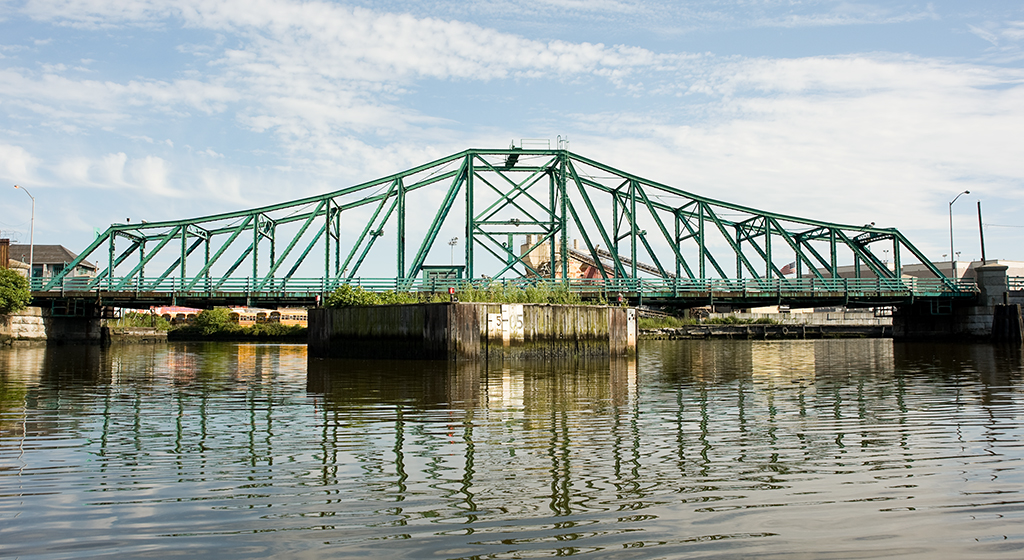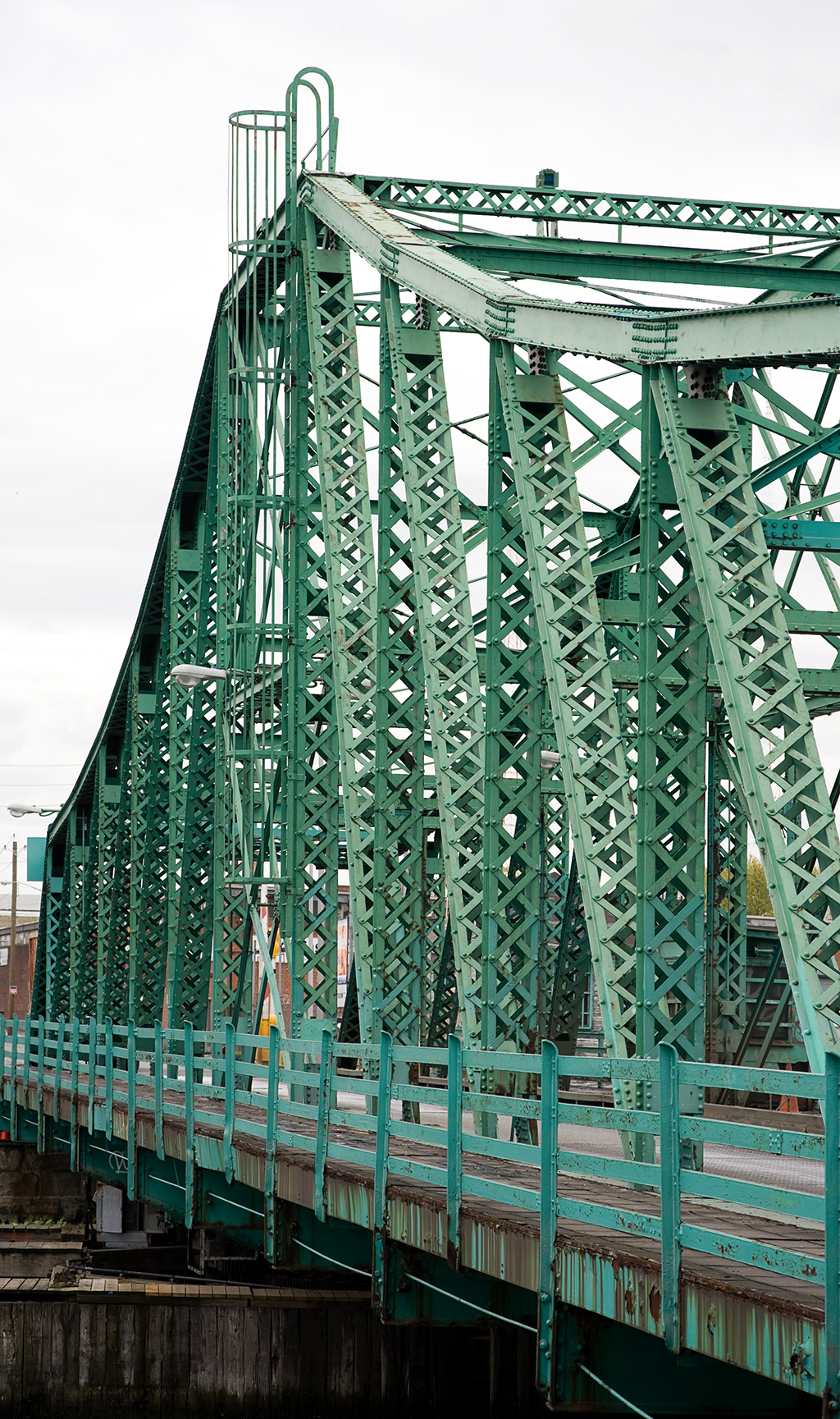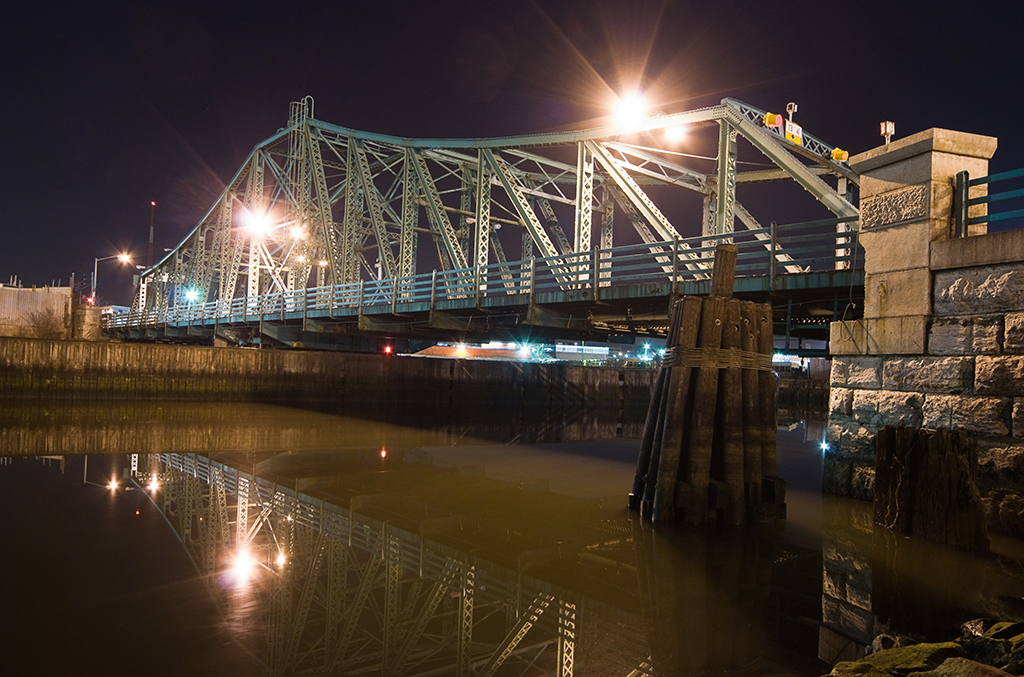
Crosses: Newtown Creek
Connects: Grand Street, Williamsburg, Brooklyn and Grand Avenue, Maspeth, Queens, NY [satellite map]
Carries: 2 vehicular lanes, 2 pedestrian sidewalks
Design: swing bridge
Date opened: February 5, 1903
The Grand Street Bridge is a through truss swing bridge across Newtown Creek, connecting Maspeth, Queens with Williamsburg, Brooklyn.
Earlier Bridges
In the 1850s Newtown Creek was an incredibly busy and polluted waterway, crowded with ships serving industrial sites like the glue factories, smelting plants, and refineries that lined its shores.
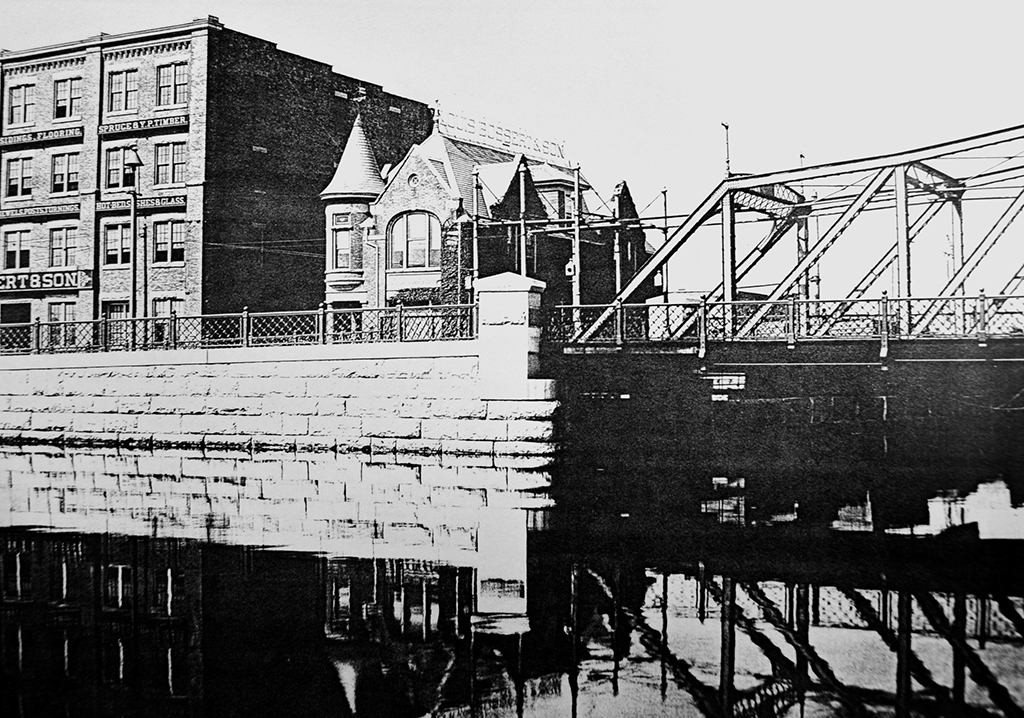
The first bridge to carry Grand Street over Newtown Creek was authorized to be built in 1869, with the cost of construction to be split between the town of Newtown (now a part of present day Queens) and the city of Brooklyn. A contract was awarded in 1874 to the King Iron Bridge & Manufacturing Company of Cleveland, Ohio, and an iron swing bridge was completed at the site the following year. In 1878, the Kings County Board of Supervisors reported that the bridge was already in bad shape; the swing span had become difficult to turn, causing traffic delays to become a commonplace occurrence. By 1881 the bridge had sunk so far into the mud that at high tide the turntable would become partially submerged in the creek. The Joint Committee on Bridges called for its replacement in 1888. A new iron swing bridge with masonry piers opened the following year. Jurisdiction over the bridge was given to the Department of Bridges in 1898 following the consolidation of the five boroughs into the City of New York. In 1899, the US War Department, looking to dredge and widen Newtown Creek, found the bridge to be an obstruction to navigation and ordered yet another bridge to be built on the site.
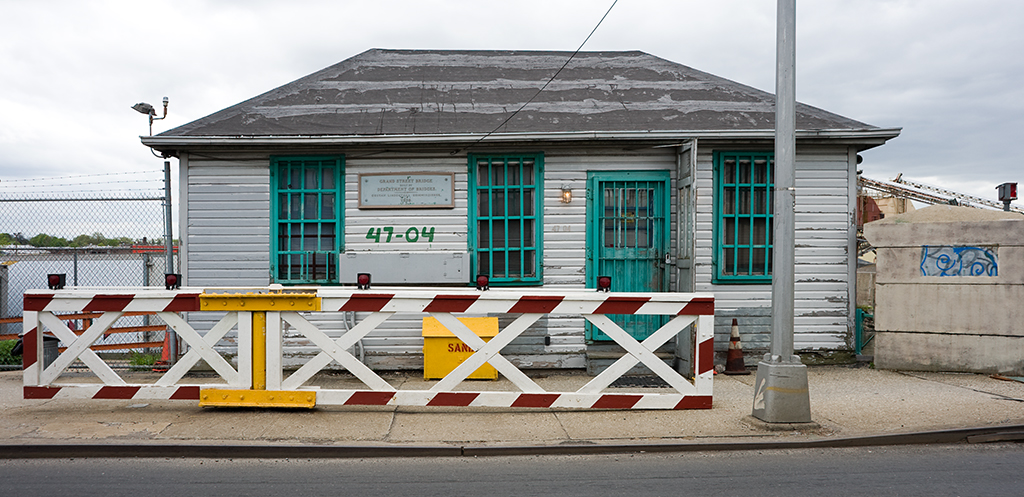
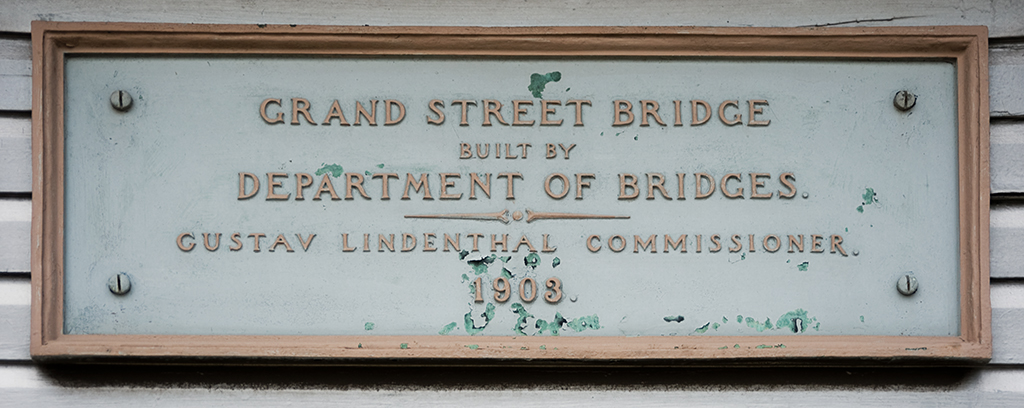
Current Bridge
On June 11, 1900, Department of Bridges Commissioner John L. Shea advertised for bids on the construction of a new span. On August 7, a contract was awarded to Bernard Rolf for a steel swing bridge at a cost of $173,380. The old bridge was closed on August 27 and a temporary pedestrian bridge made of wood was built. Construction of the new bridge took much longer than initially expected. Labor strikes, poorly made engineering plans, and deliveries of low quality building materials were compounded by problems with the dredging of the creek. The situation improved when prominent bridge engineer Gustav Lindenthal was appointed Bridge Commissioner by Mayor Seth Low in 1902. In November of that year, consulting engineer C.C. Martin was placed in full charge of the project by the Department of Bridges, and construction progressed quickly. The bridge was completed at a cost of $205,672 and opened to traffic on December 12, 1902. The City of New York officially accepted the bridge on February 5, 1903.
Crimes & Accidents
The Grand Street Bridge and the area very close to it on Newtown Creek have been site to numerous crimes and some mysterious drownings. The bridge was left unguarded at night: policemen stationed there left at 8pm and did not return until 4am. In November of 1894 The New York Times detailed a story told to them by George Roeschman, who said he had been approached by three men asking for a match while crossing the bridge one night. When he reached into his pocket, the men grabbed him, put a bag over his head, robbed him of all he had ($10), and tossed him into Newtown Creek. He lived to tell his tale, though his credibility is questionable: the lumber company Roeschman claimed he worked for had no idea who he was. In the same year several other bodies were pulled from the water near the bridge, it being unknown whether they were murdered or drowned. Two men were arrested and sentenced to Sing Sing Prison for taking and burying alive a baby from a Polish woman (of no relation to either) near the bridge.
In January 1896, Polish priest Reverend Leonard Syczek was heard crying out for help from the water by a watchman and two boat captains who happened to be nearby. He was pulled out but died later. It was thought he had fallen in accidentally: the entryways to the bridge were dark at night and it was easy to miss the walkway and fall right into the river. In September of 1927 a Maspeth man drove through the guardrail and off the narrow bridge after colliding with another car. He managed to free himself from his car and was rescued by boat.
Decline
The bridge held up relatively well until the 1950s, when reports of closures became frequent. Between 1952 and 1956 the main shaft on the turntable broke at least three times, each instance requiring a full day’s work for repairs, during which time the bridge was left in the open position to accommodate boat traffic. On June 12, 1975, a proposal was put into place to cut service for bridge openings. Until that time, a tender was employed 24 hours a day on the bridge. The plans were put off for a time, but were eventually put into place. In 2002, the Department of Transportation, who now has jurisdiction over the bridge, proposed turning the bridge into a fixed span, citing the decline of boat traffic that had come to obviate the need for bridge openings. The proposal has yet to be put into place, though bridge openings have become very rare. In 1998 (the most recent year for which data is available), the bridge was opened only 23 times for boat traffic, and another 63 times for testing. Those numbers show a sharp decline from as recent as 1990, when it was opened 610 times for boat traffic, and 42 times for testing.
